Fir vs Pine Lumber – What’s the Difference?
-
Pete Ortiz
- Last updated:
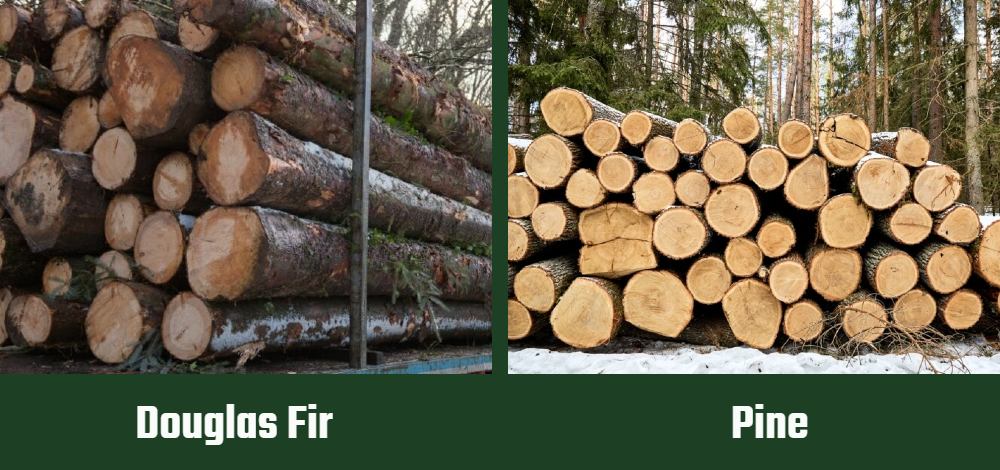
Fir and pine are both popular woods widely used for lumber in North American construction. They’re both softwoods, pleasantly aromatic with high levels of resin, and possess numerous characteristics that make them good, reliable choices of building material. However, there are still important differences between them that affect their applications and it’s important to know these differences in order to make a good choice for your given project.
Different Species of Wood
Both fir and pine have several different variants to choose from. The main varieties of the pine category that see the most use are sugar pine, eastern white pine, and southern yellow pine. Sugar pine is popular out west and is often used for making packing crates and boxes due to its strength and dimensional stability. Yellow pine is very prevalent in the Northeast. Stronger than sugar pine, it’s a popular option for use in housing, bridges, and even railroad ties. It also dries and glues quite well–another plus on the construction site.
Among the many available firs are hemlock fir, balsam fir, and, by far the most popular, Douglas fir. Douglas fir is among the most common building woods nationwide. Its high strength, durability, and stability make it a favorite among architects and engineers. It’s also impressively weather-resistant and takes nails and screws much better than other woods.
Each individual species has its own characteristics of color, hardness, durability, etc., and comparing them all would take way too long. To keep things brief and consistent, this article will primarily compare Douglas fir and yellow pine–the two most common species of their respective tree type used by carpenters and woodworkers.
Overview of Pine
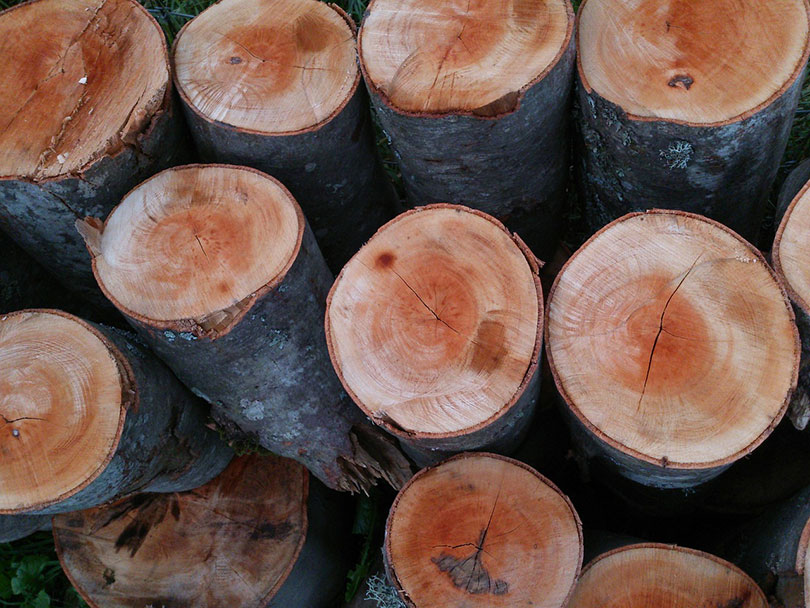
Pine is a great option as a building material. It does have certain limitations in the aesthetic realm, but this mostly depends on taste. Yellow pine is relatively soft, making it easy to work with, but also incredibly strong and durable. It is the strongest species of softwood and is stronger than Douglas fir. This impressive strength makes it an attractive choice for important structural components, it’s even used to make wooden roller coasters. Its most significant drawback is its tendency to permanently warp when exposed to weather. This can make it a risky option for applications that will be exposed to weather unless it’s given good sealing and protection.
- Easy to work with
- Durable
- Stronger than fir
- May warp from exposure
- Aesthetics
Overview of Douglas Fir
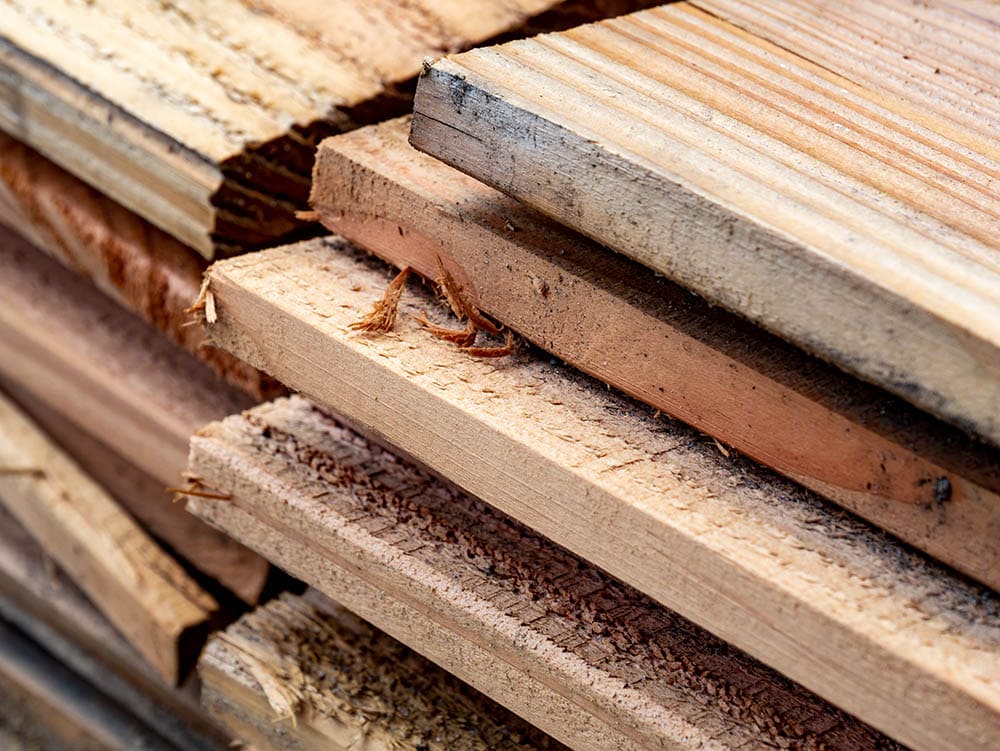
Douglas fir is an incredibly popular construction wood. Its pleasant aesthetics make it a go-to for flooring, framing, veneer, and the sort. It’s harder than yellow pine and does tend to splinter when the surface isn’t finished, so it can be a poor choice for furniture. However, this greater abrasion resistance is a bonus for high-traffic surfaces. It’s not as strong as pine, but it is denser, giving a higher strength-to-weight ratio. This makes it the wood of choice for boatbuilding where weight can be a greater factor than land applications. It’s also much more weather resistant than pine making it a far easier wood to work in external applications.
- Looks great
- Great strength-to-weight ration
- Weather resistant
- Not as strong as pine
- May splinter if unfinished
Specific Characteristics
Grain and Appearance
Both Douglas fir and yellow pine come in a range of colors. Douglas fir can range from a light color in the sapwood to a deep reddish-brown in the heartwood whereas pine can range from brown to amber to white. However, Douglas fir only changes color across the different types of wood within a tree. Pine can have color variations within a single board. This means Douglas fir’s color is more even and uniform whereas pine’s is more erratic.
Douglas fir also has a straighter, tighter grain than pine. This increases its durability and makes it less prone to warping or twisting. Just as with color, the grain is more even and uniform which makes it an attractive choice for applications such as flooring.
Pine, on the other hand, has a looser, more erratic grain typically accentuated with numerous dark knots. This can possibly make it harder to work (even though the wood is softer), but also adds an aesthetic character that many people prefer for furniture like cabinets and chests. It tends to have a more rustic look that makes it perfect for applications that give a cabin-in-the-woods sort of vibe.
Because of the straighter, more even grain, and uniform color, Douglas fir takes finish better than pine does. You can apply pretty much any finish to a Douglas fir plank, and it will look very elegant. Yellow pine, on the other hand, is less accepting of finishes due to its prevalence of knots and sap. Usually, woodworkers must apply lacquer or shellacking to properly seal pine, but once finished it does have a very nice and rich color.
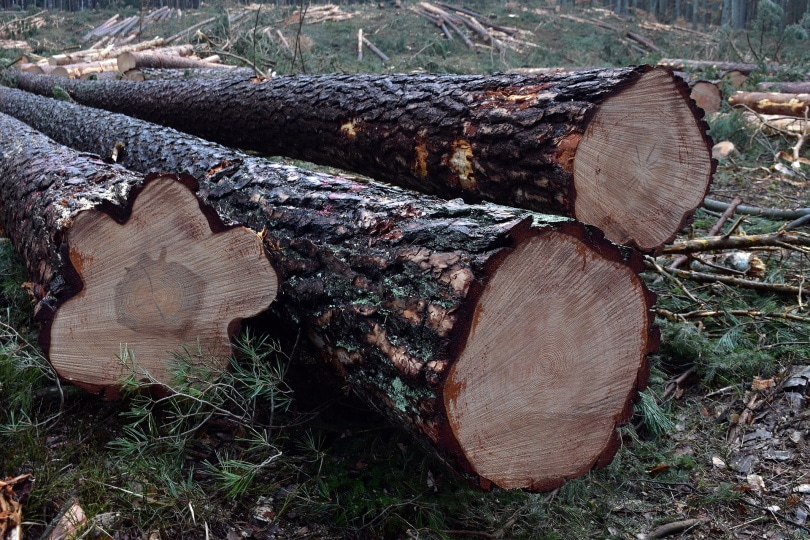
Hardness
The hardness of lumber is one of its most important qualities. It’s measured by something called the Janka scale which uses pounds per foot (lb-ft or lbf) and refers to a wood’s ability to keep its form in the face of pressure. The test works by measuring the amount of force it takes to impress a steel ball .444 inches in diameter halfway into the wood. This force is then recorded as the wood’s Janka rating.
Douglas fir has a Janka rating of 660 lbf. This is significantly harder than white pine which comes in at only 420 lbf, but about the same as yellow pine coming in at 690 lbf, and quite a bit softer than Southern longleaf pine at 870 lbf. This means that, depending on the type of pine, it can be softer and easier to work with than Douglas fir, an attractive prospect for smaller, DIY projects like furniture. However, Douglas fir’s hardness does make it more commonly used in plywood.
Strength
Another vital wood characteristic is its strength. Whereas hardness measures the malleability of the surface, strength measures the force required to break the wood’s fibers apart. It’s assessed by applying a force perpendicular to the grain and recording the pounds per square inch (psi) required to break a piece of wood.
Yellow pine has a strength of around 14,500 psi. The strongest of the softwoods. Douglas fir is the runner-up at 12,400 psi. This makes them both great choices for important, structural components like tresses, masts, and joists, but yellow pine is the preferred of the two.
Weathering
Its ability to withstand weather is without a doubt the greatest attribute douglas fir has over pine. You see, all wood has some sort of reaction with water–hence the need for sealer or varnish to keep the water out. Not only does water promote decomposition, but woods will often warp, twist, or otherwise change shape when wet. This can be a serious problem in a construction project.
Douglas fir is great because even though it will still warp, once it dries, it returns to its original shape thereby preventing any permanent damage to the structure. In fact, Douglas fir is so accommodating in its shape that it can even be installed green without harming the structure as it dries.
Pine, on the other hand, will not do this. It will warp and twist, expand or shrink and then stay that way permanently altering the integrity of whatever structure it’s a part of. Hence, if pine is used anywhere that it could be exposed to weather, it will need to be thoroughly worked over with sealant to ensure not the slightest bit of water can get through to the wood. This property gives the douglas fir a clear advantage when it comes to exterior applications such as decking or siding.
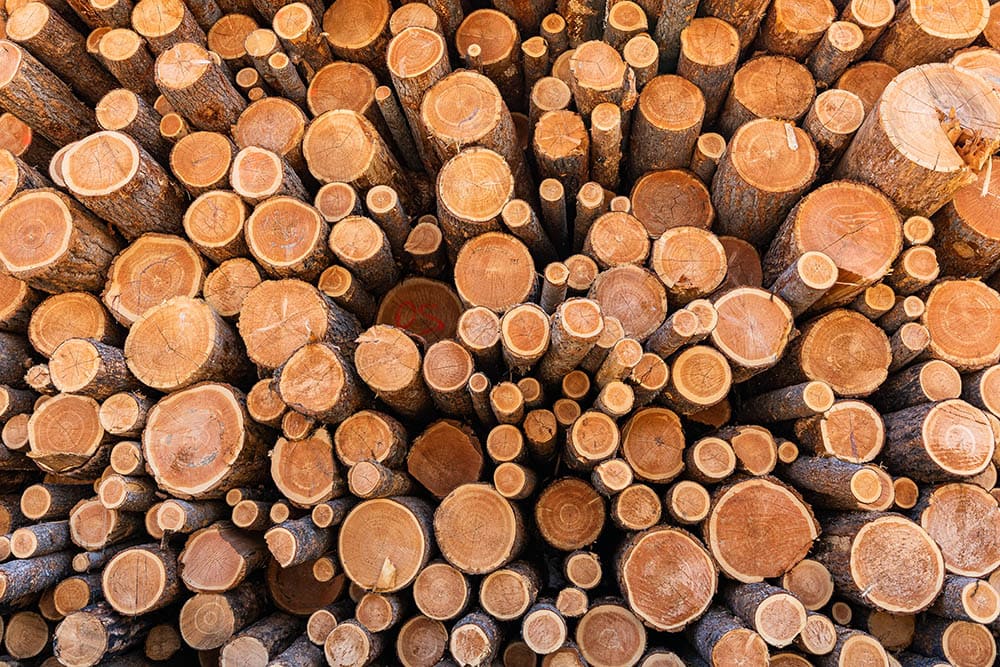
Maintenance
Pine, being softer, can scratch easily and over time will develop a patina on its surface. This isn’t a problem if you’re okay with the older, distressed look and can be left as is. However, if you want to keep a fresher look, you’ll need to sand it down and refinish the surface. Douglas fir is less prone to this patina development, so while it will still require regular wood maintenance, it doesn’t have the same requirements as pine.
Price
Due to the many features of fir more advantageous than pine (apart from strength)–its hardness, ability to withstand weather, even color and grain, etc–it is the more expensive option. Both are relatively inexpensive compared to other softwoods and especially any hardwoods, and both are very widely and commonly used, but pine does have a slight edge on douglas fir in the arena of affordability.
Sustainability
Both these woods fare comparatively well on the sustainability front. They both grow rather quickly and thus can replenish forests at good speeds. It is harder to find older growth for either variety, and this does have an impact on performance–older trees being stronger, harder, and more durable than younger–but either option is a good choice for the sustainability-minded carpenter.
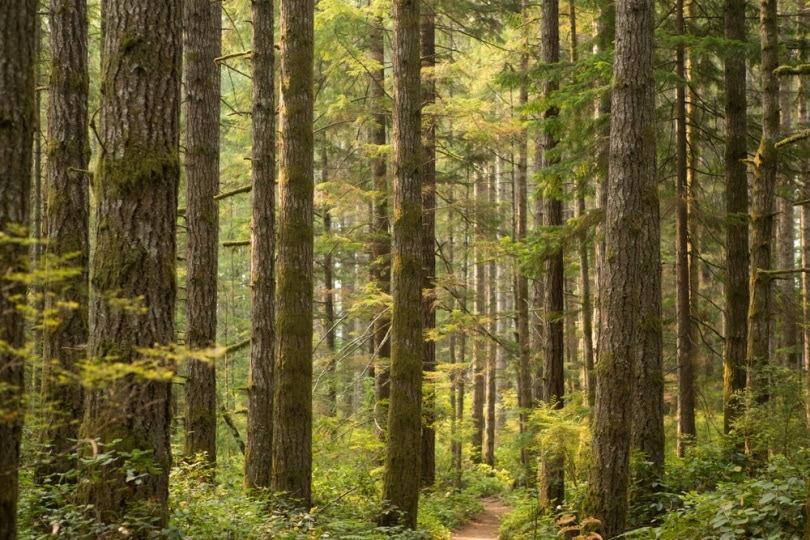
Fir vs Pine Comparisons
| Pine | Douglas Fir | |
| Color | Brown, amber, or white with numerous dark knots | Light brown, dark reddish-brown, few knots |
| Color consistency | Can vary within a single board | Uniform within a single board |
| Grain | Erratic, broad | Straight, even, tight/narrow |
| Finish | Doesn’t readily accept finish | Easily accepts any finish |
| Hardness | 420-870 lbf depending on species | 690 lbf |
| Strength | 14,500 psi | 12,400 psi |
| Weathering | Warps and twists easily and loses original shape | Returns to original shape even after warping |
| Maintenance | Surface wears, needs sanding and refinishing | Standard wood care |
| Cost | Affordable, cheaper than fir | Affordable, more expensive than pine |
| General Applications | General furniture: chairs, countertops, cabinets Structural elements: trusses, joists, poles | Exteriors, decking, flooring, plywood, ship construction
Structural elements: house and bridge trestles |
Conclusion
Douglas fir and yellow pine are both great choices for building material. They are both strong, durable, and affordable and have wide arrays of applications. The individual differences in their characteristics do give them both advantages over the other in certain applications.
Pine can be better for structures requiring maximum strength but also for hands-on wood-crafting projects. Douglas fir, meanwhile, has an advantage against the elements and can be easier to work with on an industrial scale. Ultimately, the choice between which wood to use comes down to weighing which is better for your specific job given all the factors in play.
Featured Image Credit: (L) Peter Turner Photography, Shutterstock | (R) Hanna Taniukevich, Shutterstock
Contents


